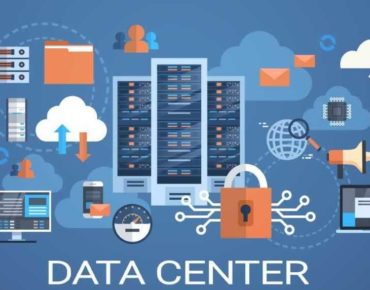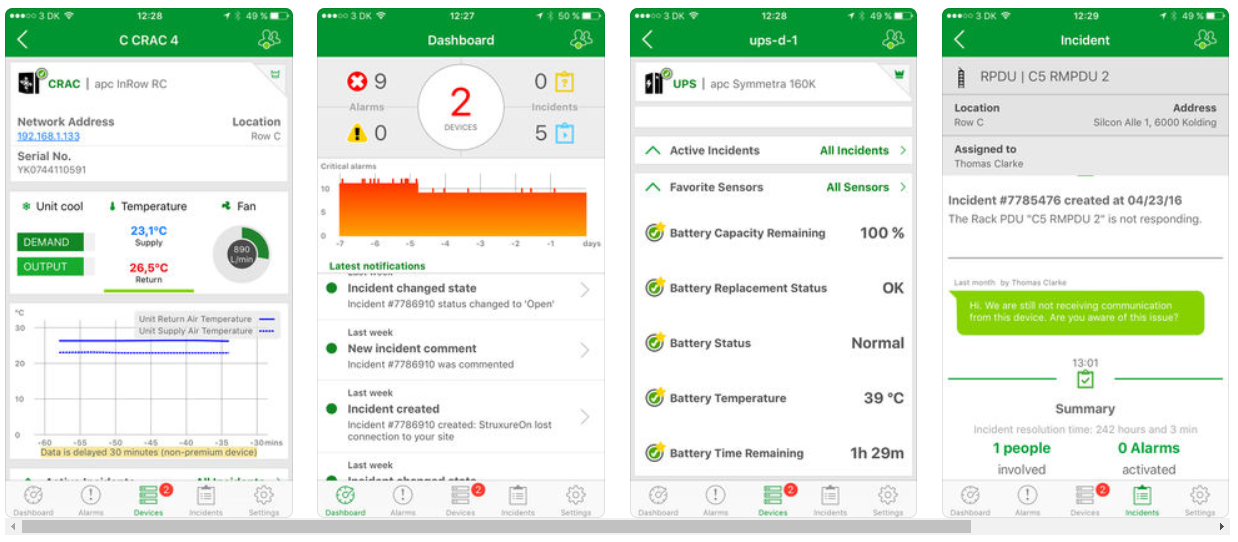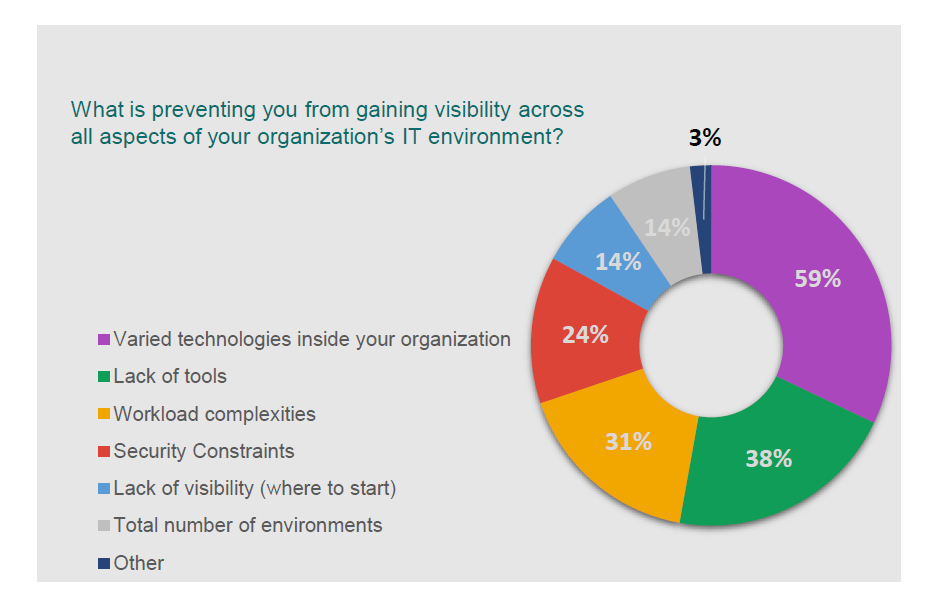The Future of Data Center Management: From DCIM to DMaaS

Source:Shutterstock ProStockStudio 697523941
The parable of the four blind people describing an elephant could be applied to data center management, as can the proverb about divide-and-conquer: too often, disparate data center constituencies monitor performance through the prism of their own operational perspectives. Commonly lacking is holistic, overarching visibility into all facets of the operation, from monitoring to asset change and configuration.
But this isn’t for lack of solutions. Available for several years, DCIM (data center infrastructure management) are on-prem tools from Schneider Electric, Nlyte, Vertiv and Siemens, among others, that integrate sensor data from throughout the data center and report on availability, temperature, airflow, humidity, power consumption, security and other variables. Though not the vendors’ fault, most users have not implemented all the capabilities offered by these solutions to gain a overall view of their data centers. Integrated DCIM functionality, according to data center analyst Rhonda Ascierto, VP of Research at Uptime Institute (a division of industry watcher The 451 Group), is more mature than most customers’ DCIM implementations.
“Most organizations that have deployed DCIM are still fairly early on in their journeys of exploiting all the features and functions available to them,” Ascierto told EnterpriseTech. “Because even though the integration capabilities (of DCIM solutions) have really improved dramatically – their ability to make integrations bi-directional and real time quite easily – it’s still not a trivial undertaking, particularly in enterprises, because there’s still a lot of organizational siloes. In many organizations, the IT department doesn’t communicate regularly, if at all, with the facilities teams, and it really requires an alignment between IT and data center facilities teams to effectively do integrations.”
Having said that, there’s one capability even the most thorough DCIM integration can’t provide: gaining insight from massive volumes of data collected from many other data centers. That’s where an emerging software category called DMaaS (data center management as a service, “dee-mass”) enters the picture.
Regarded by Ascierto as “a potential game changer” in the data center world, DMaaS does DCIM one better (with two caveats – see below). Though based on DCIM software, DMaaS differs from on-premises and SaaS-delivered DCIM in that it “aggregates and analyzes large sets of anonymized customer data, and can be enhanced with machine learning.”
That is, DMaaS has access to data compiled in massive and growing cloud-based data lakes. “DMaaS enables metrics and views that aren’t possible with DCIM alone,” she said, “unless you have a really big data center portfolio and you’re generating enough data to do your own data analytics and apply machine learning algorithms to it. The people who have those really big footprints are very few, the big internet giants, some of the biggest colocation providers. But for everybody else, the insights that they can get from their own facility will never match what they can get with the DMaaS approach.”
DMaaS, she wrote in a report released this week, is part of a “long-term evolutionary change toward integrating physical data center infrastructure management with many other services, including – but not limited to – IT workload management, energy management, connectivity and business costing. This development will take time to play out, but as more data is amassed by DMaaS suppliers over the short term, the greater their analytical capabilities will be and the more compelling the service will become.”
DMaaS can also enhance preventive maintenance. “A key goal is to predict and prevent data center infrastructure incidents and failures and to detect inefficiencies or capacity shortfalls,” said Ascierto
As one customer said to Ascierto, “'When [DMaaS] knows more about my data center than my team, this will be valuable.'”
Data center management, and its challenges, were highlighted in the results of a survey (“The Current State of Data Center Management as a Service”) commissioned by Intel and announced this week. A key finding: many managers have only a limited view of their data center operations.
According to the study, conducted by Morar Consulting, “While most organizations deploy some mix of data center management solutions, including on-premise (83 percent) to gain a holistic view of their data center’s performance, over half of respondents (59 percent) signaled they still struggle with varied technologies that hinder their data management strategy.”
Coming in next as blocks to better data center efficiency: lack of tools (38 percent) and workload complexities (31 percent), according to the study of more than 200 IT decision makers in the U.S. and UK, who were surveyed in April. “These last data points indicate that whichever solution is required must be flexible enough to tolerate customization and varied processes along with allowing faster rollout of new features,” the report stated.
Jeff Klaus, Intel’s GM, Data Center Solutions, said the study’s most noteworthy finding is the lack of centralized data center management.
“It was surprising to me that there are multiple or various technologies that may be trying to do some overlapping capabilities,” he told us in a phone interview. “There are different champions coming from divisions of organizations…, different constituents with the data center having their own tools. It’s the DevOps team, the cloud architecture people, the IT people and the facilities managers… It’s very rare to have all those different constituents in one room.”
Calling Intel “the Switzerland” of IT infrastructure data, Klaus said the company’s contribution to the evolution of data center management tools is supporting data standardization so that access and analysis of it is easier.
“We’re trying to expose all the IT devices – servers, blades, networks and storage – and provide the real time power minimum maximum and average usage, with inlet and outlet temperatures on the server, there’s also temperature sensors on some network equipment,” he said. “Whatever is available, we’re extracting it and serving it up to companies like Schneider that can utilize that data to make inferences, to draw some use case information based on historical data with other customers, and make recommendations.”
But even as DMaaS evolves, matures and draws insights from larger data lakes, Ascierto cautioned that DMaaS probably won’t completely obsolete DCIM, and that’s because it’s situated off-premises in the cloud.
“The rub is that with DMaaS you’re going over a wide area network, and in real time alarming in a data center, seconds matter,” she said. “You might get wider alarm time lead times (from DMaaS), but you’re relying on a WAN for that information to come back to you, (and)…you can have latency problems... The internet as we know not only can have latency issues, there could be service interruptions, as well as over WANs. So for truly mission critical data center you can’t completely rely on DMaaS around alarming. You’ll also want to have on-prem real time alarm monitoring in place.”
Ascierto said the same applies to closed loop, mission critical automation inside the data center. “You’re not going to outsource that automation functionality (to DMaaS)… because it’s too critical. You can’t rely on a wide area network.”
Nevertheless, Ascierto’s is generally impressed with the progress DMaaS solutiosn providers are making.
“I really think this is the future of data center management,” she said. “Once the promise of this next generation of edge computing begins to materialize, in large part driven by IoT…, as that matures and develops this wave of IoT applications and workloads, we anticipate a wave of new edge data center capacity. This will include new data center form factors – specifically, micro modular data centers. These are small footprint, all-in-one data centers.”
This, she said, could result in large distributed networks of micro modular data centers connected to macro data centers, be it a colocation facility or an enterprise facility, along with a public cloud.
“Then you’ll have quite a complex data center footprint,” Ascierto said. “So I really believe that the future for data center management is going to be remote, it’s going to be AI-driven, it’s going to be cloudy and DMaaS is going to play an important role.”













